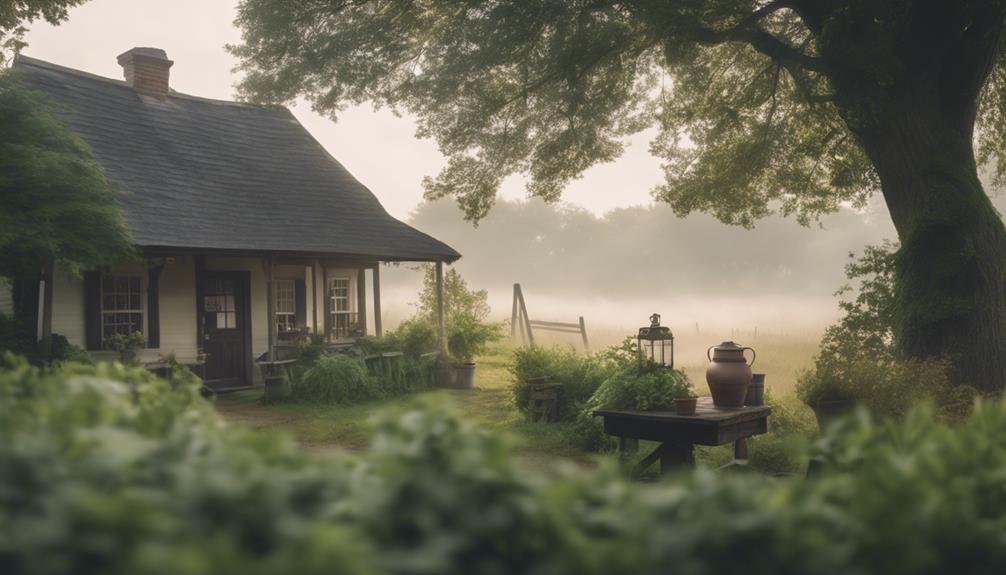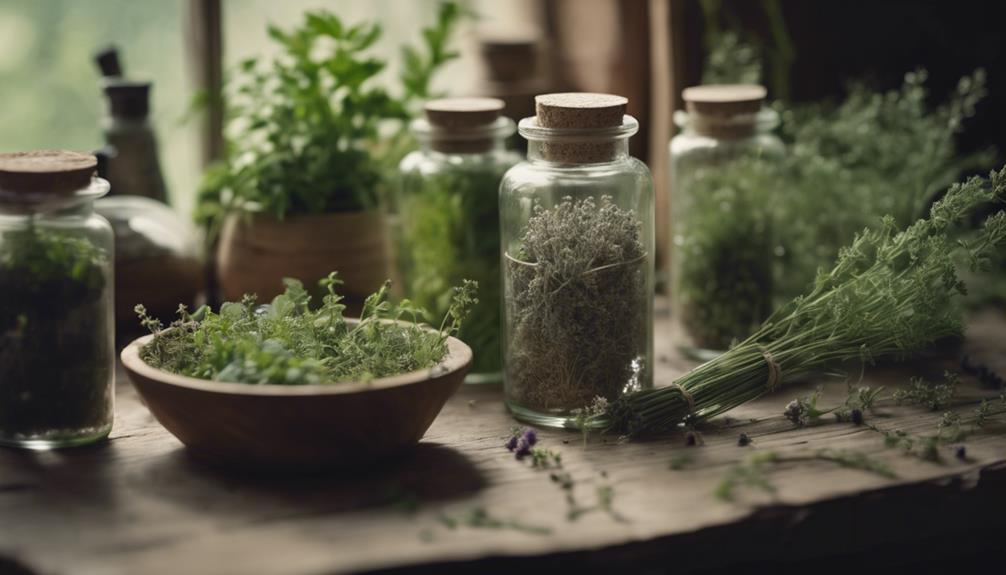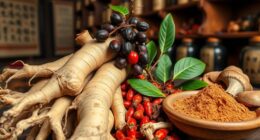We're diving into the world of herbology in Gettysburg, where local plants hold remarkable healing properties. We're exploring the diverse range of plants used for centuries for health and wellness, and hands-on classes teach us about medicinal properties of herbs. From sustainable harvesting practices to creating our own tinctures and salves, we're discovering the power of herbalism. We're learning about holistic healing, natural remedies, and cultivating our own herb gardens. As we uncover the healing potential of local plants, we're empowered to take charge of our health and connect with nature's medicine chest. By exploring further, we'll uncover more secrets of the natural world.
Key Takeaways
• Explore local medicinal herbs in Gettysburg through hands-on classes and workshops, discovering their healing properties and uses.
• Learn sustainable harvesting practices to ensure long-term availability of herbal resources and preserve the delicate ecosystem balance.
• Engage in hands-on herbalism workshops, creating tinctures, salves, and teas, and deepening understanding of botanicals and well-being benefits.
• Delve into holistic healing with local plants, understanding the intersection of plant medicine and the regional ecosystem for a more natural approach to wellness.
• Discover natural remedies for common ailments, such as chamomile tea for restful sleep and ginger for digestive comfort, through herbalism classes in Gettysburg.
Exploring Medicinal Herbs of Gettysburg
As we investigate the world of medicinal herbs in Gettysburg, we uncover a plethora of local plants with remarkable healing properties waiting to be unearthed. We're not just talking about a handful of well-known herbs; we're discussing a diverse range of plants that have been used for centuries to promote health and wellness.
Through hands-on classes and workshops, we explore the medicinal properties of these herbs, learning about their unique characteristics and how they can be used to prevent and treat various ailments.
We take part in herb identification walks, where we venture into the local ecosystem to discover the hidden gems of Gettysburg's flora. We learn about the different species, their habitats, and how they can be used in natural remedies.
From teas to tinctures, we explore the various ways to harness the healing potential of these plants. As we connect with like-minded individuals passionate about plant-based healing, we become part of a community that shares our passion for herbalism.
Sustainable Harvesting Practices Learned
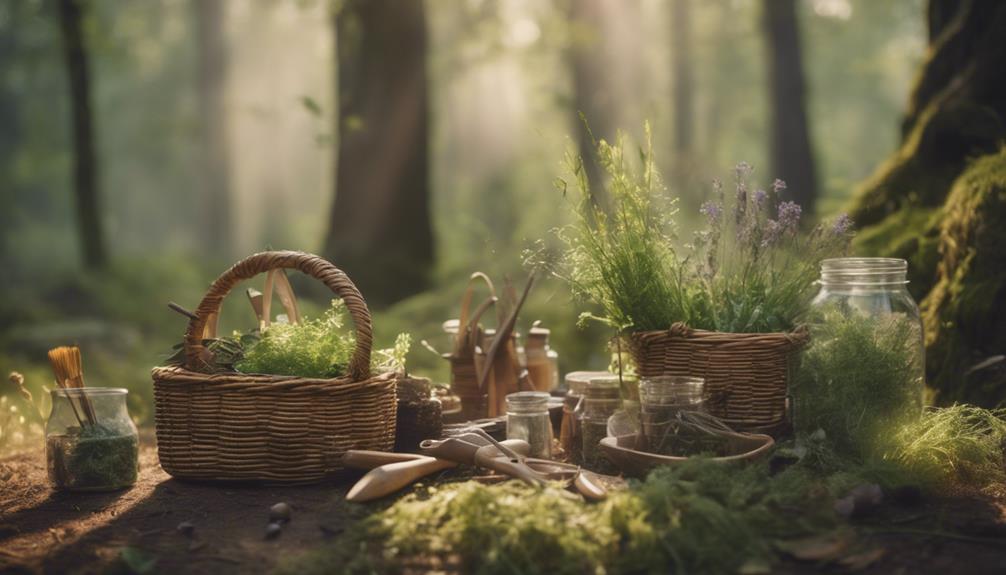
We learn that important herb gathering is just as paramount as understanding their medicinal properties, and that's why we focus on sustainable harvesting practices in our herbology classes.
As we explore into the world of herbalism, we realize that respecting plant populations and habitats is vital to guarantee the long-term availability of herbal resources. Our classes emphasize the importance of ethical wildcrafting, plant identification skills, and mindful harvesting to promote biodiversity conservation.
We grasp the significance of seasonal variations, growth patterns, and regenerative practices in sustainable herb harvesting. By incorporating sustainability into our herbal education, we foster a deeper connection to the natural world and promote environmental stewardship.
We acknowledge that responsible harvesting practices are essential to preserve the delicate balance of ecosystems, ensuring that future generations can continue to benefit from the medicinal properties of herbs. By adopting sustainable practices, we can enjoy the benefits of herbalism while protecting the very resources that make it possible.
Hands-On Herbalism Workshop Experiences
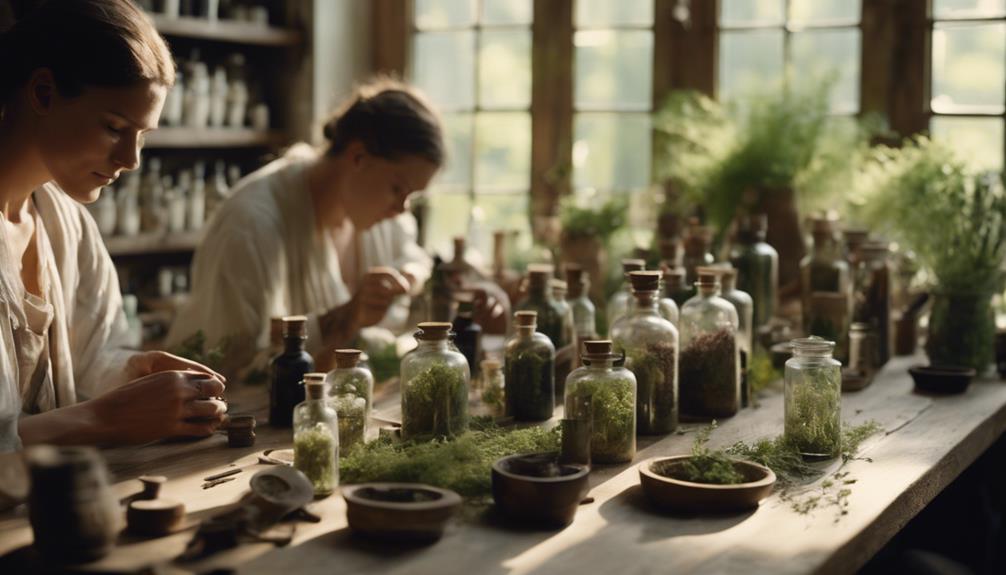
As we explore the Hands-On Herbalism Workshop Experiences, we're excited to discover the many ways we can engage with herbal remedies.
We'll examine how we can put botanicals into practice today, exploring medicinal plant properties and their applications.
Herbal Remedies Exploration
In our hands-on herbalism workshops, we fully immerse ourselves in the world of herbal remedies, creating our own tinctures, salves, and teas under the guidance of experienced instructors. We delve into the world of medicinal herbs, learning about their properties and how to harness their healing benefits. From selecting the right herbs to crafting our own remedies, we engage in the entire preparation process.
| Remedy | Properties |
|---|---|
| Tinctures | Antimicrobial, anti-inflammatory |
| Salves | Soothing, moisturizing |
| Teas | Calming, digestive aid |
| Infused Oils | Skin nourishing, anti-aging |
Through these workshops, we gain confidence in using herbal remedies and develop a deeper understanding of their applications. By getting hands-on experience, we can better appreciate the potential of herbalism in promoting overall well-being.
Botanicals in Practice Today
By diving into hands-on herbalism workshops, we get to experience the tangible benefits of botanicals in our daily lives. Through these interactive sessions, we engage in activities like identifying herbs, harvesting, and preparing remedies, which helps us integrate herbalism into our daily health routines. We learn about the properties and benefits of various botanicals, which deepens our understanding of herbal medicine practices.
These workshops provide a platform for us to explore the practical applications of botanicals, moving beyond theoretical knowledge. We get to experiment with different herbal remedies, creating personalized blends that cater to our specific needs. This hands-on approach allows us to develop a deeper connection with the natural world and appreciate the intricate relationships between plants, people, and the environment.
As we work with botanicals, we begin to appreciate their potential to enhance our well-being and foster a sense of community among like-minded individuals. By immersing ourselves in these workshops, we can experience the transformative power of herbalism in our daily lives.
Medicinal Plant Exploration
We venture into the natural habitats of Gettysburg's medicinal plants, guided by expert herbalists who teach us how to identify, harvest, and prepare these botanical wonders for practical use. We explore the world of medicinal plant exploration, where we learn about the ecological importance of conservation and sustainable harvesting practices. Through hands-on experiences, we gain a deeper understanding of the medicinal properties and uses of local plants in Gettysburg.
As we investigate the natural habitats, we discover the healing power of nature. We learn to create herbal remedies and connect with the natural world through experiential learning.
We uncover the secrets of medicinal plants, hidden in plain sight, and reveal their potential for healing.
We connect with the natural world, fostering a sense of respect and appreciation for the land and its resources.
We tap into the ancient wisdom of herbalism, passed down through generations, and make it our own.
Holistic Healing With Local Plants

As we delve into the world of holistic healing with local plants, we're excited to learn about the basics of plant medicine and how it intersects with our regional ecosystem.
We'll discover how the unique characteristics of Gettysburg's local landscape influence the medicinal properties of the plants that grow here.
Plant Medicine Basics
In our Plant Medicine Basics class, we'll explore the world of holistic healing, investigating the vast potential of local plants to promote health and well-being.
We'll investigate the world of plant medicine, learning how to identify, harvest, and prepare medicinal plants to create herbal remedies that nourish our bodies and souls.
Through hands-on experience, we'll develop the skills to craft teas, tinctures, and salves that harness the healing power of plants. In a supportive learning environment, we'll explore the intricate connections between plant medicine and the mind-body-spirit.
We'll uncover the secrets of local plants, hidden in plain sight, waiting to be discovered.
We'll tap into the ancient wisdom of herbalism, passed down through generations.
We'll empower ourselves to take control of our health, using nature's pharmacy to heal and thrive.
Local Ecosystem Exploration
What secrets lie hidden in the local landscape, waiting to be unearthed by curious minds and hands?
As we investigate the world of herbology, we're enthusiastic to explore the local ecosystem and uncover its hidden treasures. In our classes, we focus on connecting with the plants native to the region, learning to identify, harvest, and utilize them for their medicinal and culinary properties. We emphasize sustainable practices to protect the local ecosystem and its precious plant species.
Through hands-on experiences in the local landscape, we deepen our understanding of the healing properties of indigenous plants. By engaging with the land and its natural resources, we develop a profound connection to the environment. We learn to appreciate the intricate web of life and our role within it.
As we explore the local ecosystem, we discover the beauty of holistic healing with local plants. By doing so, we not only improve our well-being but also cultivate a sense of responsibility towards the natural world.
Herbal Remedies for Common Ailments
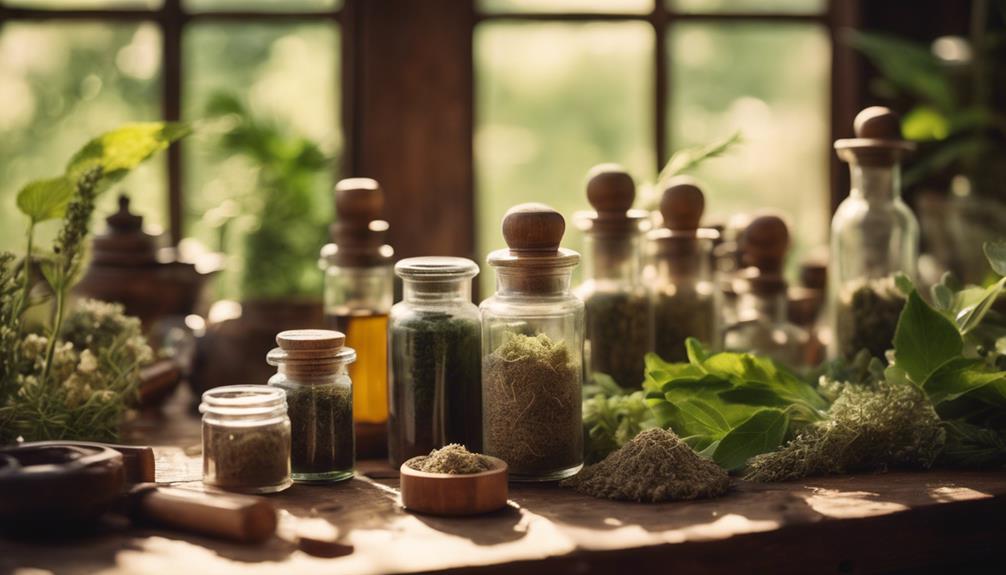
We often reach for over-the-counter medications to alleviate common ailments, but natural herbal remedies can provide a safer, more sustainable solution. As we explore the world of herbology, we're discovering the incredible benefits of using herbs to address everyday health concerns. From soothing headaches to calming digestive issues, herbal remedies offer a gentle yet effective approach to wellness.
Some of the most promising herbal remedies include:
- Chamomile tea for a restful night's sleep: Imagine sipping a warm, calming brew before bed, and waking up feeling revived and revitalized.
- Ginger for digestive comfort: Picture enjoying a warm, spicy tea to ease bloating and discomfort, and feeling lighter and more energized.
- Peppermint salve for headache relief: Envision applying a cooling, invigorating balm to your temples, and feeling tension melt away.
Connecting With Nature's Medicine Chest

As we explore the world of herbology, we're excited to uncover the secrets of medicinal plants that have been used for centuries to promote health and wellness.
We'll examine the natural remedies that have been hidden in plain sight, and how they can provide a safer, more sustainable alternative to synthetic medications.
Medicinal Plants Matter
In nature's medicine chest, we've discovered an astonishing array of healing properties within the diverse world of medicinal plants. As we explore further into the domain of herbalism, we're reminded of the importance of preserving plant species and adopting sustainable harvesting practices to secure the longevity and availability of these natural wonders.
As we investigate the sphere of medicinal plants, we're struck by the significance of biodiversity in the effectiveness of herbal medicine. It's a sobering realization that our actions today will impact the availability of these natural remedies for future generations.
- The ancient wisdom of herbalism reminds us of our deep connection to the natural world.
- The delicate balance between nature and human existence is put into stark relief by the intricate relationships between plants and the ecosystems they inhabit.
- As we learn to harness the power of medicinal plants, we're compelled to adopt a more respectful and sustainable approach to our environment.
Natural Remedies Uncovered
By investigating the natural world, we uncover the secrets of medicinal plants and learn to harness their healing power through the Natural Remedies Uncovered classes.
As we delve into the realm of herbal medicine, we discover the incredible benefits and applications it has to offer. We learn to identify, harvest, and prepare medicinal plants found in our local ecosystem, emphasizing sustainable practices and the importance of biodiversity.
Through hands-on experience, we create herbal remedies like teas, tinctures, and salves, connecting us with nature's medicine chest. The curriculum promotes a deeper understanding of the healing power of plant-based medicine, dispelling misconceptions and myths.
We gain a profound appreciation for the interconnectedness of nature and our well-being. By investigating the natural world, we reveal the secrets of medicinal plants, empowering us to take charge of our health and wellness.
Herbalism for Beginners and Beyond
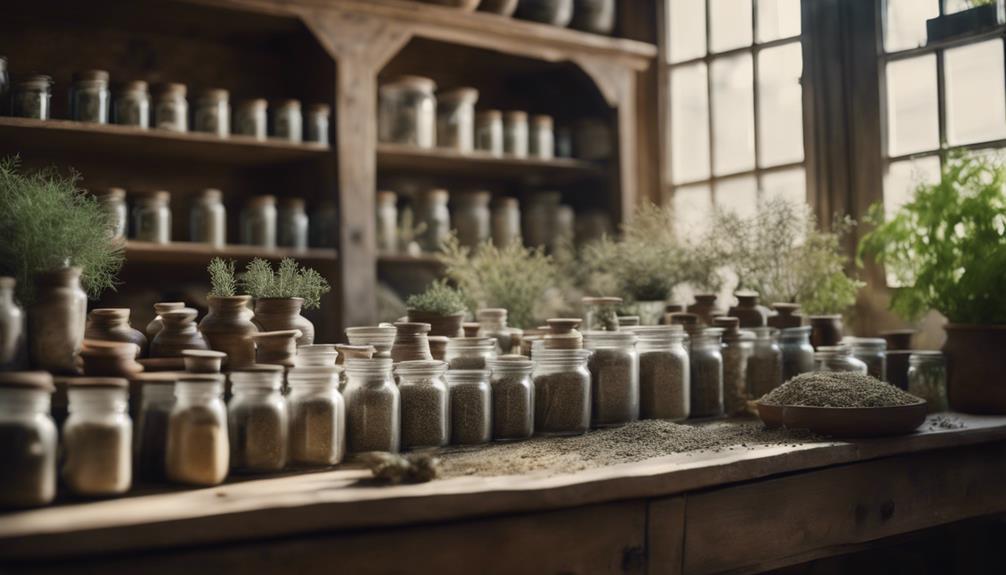
We immerse ourselves in the world of herbalism, where beginners and seasoned learners alike can explore the vast possibilities of plant-based remedies and wellness. In Gettysburg, herbalism classes cater to both newcomers and advanced learners, offering a thorough education in herbology.
From plant identification to herbal remedy preparation, our courses explore the rich history and practical applications of herbology.
Through hands-on experiences in herb gardening, harvesting, and medicine making, we foster a deeper connection to nature and holistic well-being. We discover the vast potential of herbalism, from soothing anxiety to boosting immunity.
Investigate the secrets of ancient remedies and tap into the natural healing power of plants.
Explore the rich history of herbalism and its cultural significance.
Embark on a journey of self-discovery and empowerment through holistic wellness.
Cultivating a Personal Herb Garden
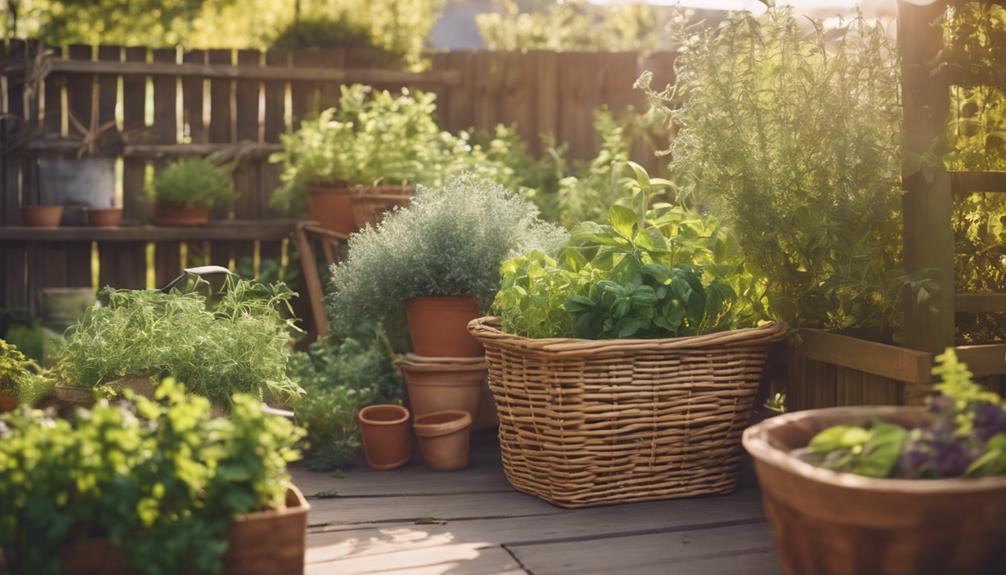
As we venture into the world of herbalism, we're taking control of our health and wellness by cultivating a personal herb garden, where freshness, quality, and sustainability meet. By growing our own herbs, we're ensuring we've access to the freshest, organic herbs for both culinary and medicinal purposes. We're in control of the soil, water, and sunlight our herbs receive, which guarantees quality.
Our personal herb gardens can be tailored to suit our needs and preferences, whether we focus on cooking herbs, medicinal herbs, or a combination of both. By cultivating herbs at home, we're promoting sustainability and reducing our carbon footprint by decreasing our reliance on store-bought herbs. Plus, we're gaining hands-on experience, deepening our connection to nature, and understanding the growth process of different herbs.
As we nurture our herb gardens, we're not only reaping the benefits of fresh, high-quality herbs but also fostering a deeper appreciation for the natural world.
Herbal Preparations and Recipes Shared
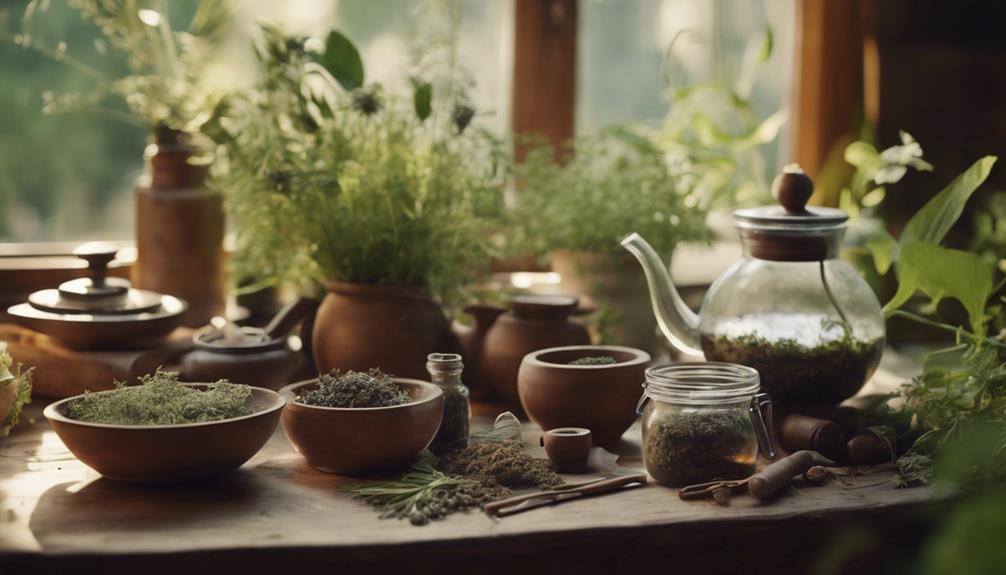
Now that we've got our personal herb gardens thriving, we're ready to explore the art of crafting herbal preparations that harness the full potential of our fresh, homegrown herbs. In our herbology classes, we explore the world of teas, tinctures, and salves, learning how to create remedies that promote peak health and wellness.
Our experienced instructors share recipes that incorporate local, sustainable ingredients, ensuring we reap the most benefits from our herbal creations.
Some of the herbal recipes we learn include:
- Soothing lavender tea to calm the mind and body
- Immunity-boosting echinacea tincture to fight off colds and flu
- Ginger and turmeric salve to reduce inflammation and ease pain
Through hands-on workshops, we gain practical skills in preparing and using herbal remedies for various health and wellness purposes. By the end of our herbology classes, we're equipped with the knowledge and skills to create our own herbal preparations, empowering us to take control of our health and wellness.
Nurturing Body and Spirit Naturally

By embracing the natural wisdom of herbs, we foster a deeper connection between our bodies and the earth, nurturing our overall well-being from the inside out. Our herbology classes in Gettysburg focus on nurturing body and spirit naturally, highlighting the holistic connections between plants and our overall well-being. We believe that by working in harmony with nature, we can cultivate a deeper sense of balance and harmony within ourselves.
| Plant | Properties | Benefits |
|---|---|---|
| Chamomile | Calming, Soothing | Reduces anxiety, Promotes relaxation |
| Lavender | Calming, Uplifting | Improves sleep, Boosts mood |
| Peppermint | Invigorating, Rejuvenating | Relieves digestive issues, Increases energy |
| Ginger | Warming, Soothing | Eases nausea, Reduces inflammation |
| Echinacea | Immune-boosting, Anti-inflammatory | Supports immune system, Fights off infections |
Through hands-on learning and experiential practices, we explore the local landscape and plants that play an essential role in our herbology curriculum. We emphasize sustainable harvesting and reverence for the local ecosystem, ensuring that our connection with nature is mutually beneficial.
Frequently Asked Questions
How Long Does It Take to Become a Herbalist?
We're often asked how long it takes to become a herbalist. The answer varies, but generally, it takes anywhere from 6 months to 2 years, depending on the program and level of certification.
Some programs offer flexible online options, while others require hands-on experience through apprenticeships or internships.
After certification, we may choose to pursue advanced degrees or certifications to deepen our knowledge and expertise in herbal medicine.
How Do I Start Studying Herbology?
We start studying herbology by setting clear goals, whether it's for personal interest or a career.
We research and understand the basics of herbology, including history, terminology, and principles.
Then, we explore different education paths, such as online courses, workshops, or formal degree programs.
We also seek out experienced herbalists, attend seminars, and read reputable books to gain a solid foundation in herbology.
Can You Be an Herbalist Without a Degree?
We envision a future where botanical wisdom flows freely, unshackled by degrees. And the good news is, we can make that vision a reality.
The truth is, we don't need a formal degree to become an herbalist. Many successful herbalists learn through apprenticeships, self-study, and workshops, focusing on practical experience and knowledge of local plants.
This diverse field welcomes individuals from all educational backgrounds, offering certification programs and continuing education options to support our growth.
What Is the Difference Between a Clinical Herbalist and a Community Herbalist?
We often get asked about the difference between clinical and community herbalists. Here's the lowdown: clinical herbalists work one-on-one with clients to address specific health concerns, often in healthcare settings. They typically have formal training and work alongside other healthcare pros.
Community herbalists, on the other hand, focus on educating and empowering communities about herbal medicine and sustainable practices, often leading workshops and events.
Conclusion
As we explore the world of herbology in Gettysburg, we unearth a treasure trove of natural remedies and sustainable practices. From hands-on workshops to holistic healing, we discover the power of local plants to soothe body and spirit.
With each new lesson, our connection to the natural world deepens, and our understanding of herbalism grows. As we cultivate our own herb gardens and concoct remedies, we become the guardians of a timeless tradition, weaving a tapestry of wellness that will flourish for generations to come.

